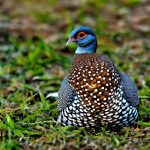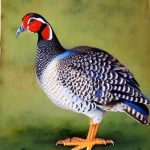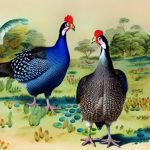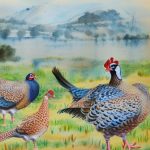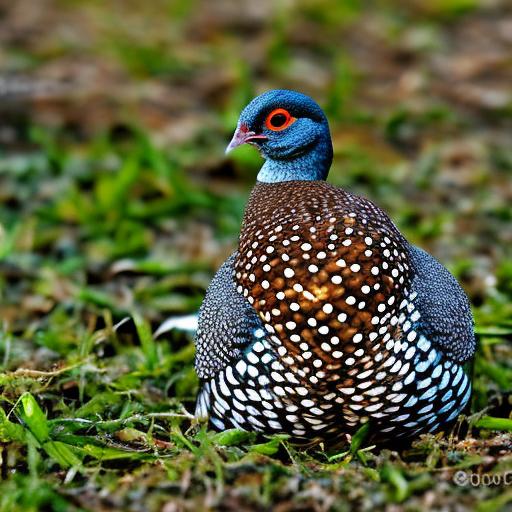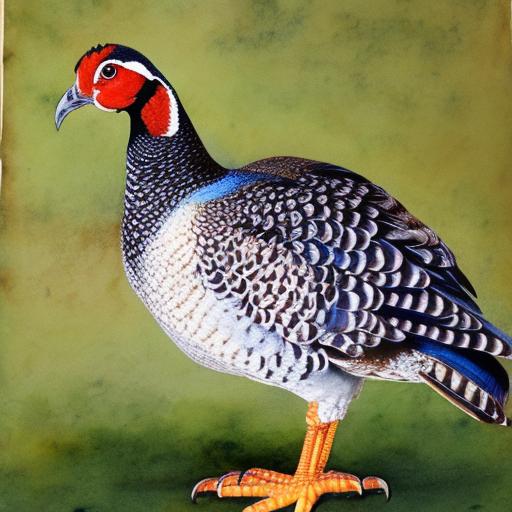Guinea fowl, also known as pintades, are a group of birds native to Africa. They belong to the family Numididae and are closely related to other game birds such as pheasants and turkeys. Guinea fowl are known for their distinctive appearance, with a small, round body, long neck, and small head. They are also known for their loud, distinctive call, which can be heard from a distance. Guinea fowl are popular for their meat, eggs, and pest control abilities. They are often kept on farms and homesteads for their ability to eat insects and control pests such as ticks and grasshoppers. Guinea fowl are also known for their hardiness and ability to thrive in a variety of climates, making them a popular choice for small-scale poultry farming.
Guinea fowl come in a variety of breeds, each with its own unique characteristics and traits. Some breeds are known for their striking plumage, while others are prized for their meat or egg production. In this article, we will explore the different breeds of guinea fowl, including the helmeted guinea fowl, crested guinea fowl, vulturine guinea fowl, plumed guinea fowl, and domestic guinea fowl. Each breed has its own distinct features and qualities, making it important for potential owners to understand the differences between them before choosing the right breed for their needs.
Key Takeaways
- Guinea fowl are a type of bird known for their unique appearance and loud calls
- Helmeted guinea fowl are the most common and widely distributed species
- Crested guinea fowl are known for their distinctive feathered crest on their head
- Vulturine guinea fowl have a striking appearance with blue and white feathers and a vulture-like head
- Plumed guinea fowl are the largest and most colorful of the guinea fowl species
- Domestic guinea fowl are popular for their pest control abilities and are often kept on farms
- When choosing the right breed of guinea fowl, consider factors such as space, climate, and intended purpose
Helmeted Guinea Fowl
The helmeted guinea fowl (Numida meleagris) is the most common and widely recognized breed of guinea fowl. It is known for its distinctive appearance, with a blue-gray body covered in white spots and a bare, blue head with a bony helmet-like protrusion on top. The helmeted guinea fowl is a hardy and adaptable bird that can thrive in a variety of environments. It is also known for its loud call, which can be heard from a distance. Helmeted guinea fowl are popular for their meat and egg production, making them a valuable addition to small-scale poultry farms.
In addition to their practical uses, helmeted guinea fowl are also popular for their striking appearance and unique behavior. They are known for their social nature and often form tight-knit flocks with strong social hierarchies. They are also highly alert and make excellent watchdogs, alerting their owners to any potential threats or disturbances. Overall, the helmeted guinea fowl is a versatile and valuable breed that is well-suited to a variety of farming and homesteading situations.
Crested Guinea Fowl
The crested guinea fowl (Guttera pucherani) is a striking breed known for its distinctive crest of feathers on its head. This breed is native to sub-Saharan Africa and is often found in woodland and savannah habitats. The crested guinea fowl is slightly larger than the helmeted guinea fowl and has a more rounded body shape. It is known for its striking appearance, with a dark gray body covered in white spots and a prominent crest of feathers on its head. The crested guinea fowl is also known for its loud call and social nature, often forming tight-knit flocks with strong social hierarchies.
In addition to their striking appearance, crested guinea fowl are also valued for their meat and egg production. They are hardy birds that can thrive in a variety of environments and are well-suited to small-scale poultry farming. Crested guinea fowl are also known for their ability to control pests such as ticks and grasshoppers, making them a valuable addition to farms and homesteads. Overall, the crested guinea fowl is a versatile and valuable breed that is well-suited to a variety of farming and homesteading situations.
Vulturine Guinea Fowl
The vulturine guinea fowl (Acryllium vulturinum) is one of the most striking and unique breeds of guinea fowl. It is native to East Africa and is known for its distinctive appearance, with a blue-gray body covered in white spots and long, iridescent blue feathers on its neck and back. The vulturine guinea fowl is also known for its long legs and elegant gait, giving it a regal and majestic appearance. This breed is slightly larger than other breeds of guinea fowl and is often found in open woodland and savannah habitats.
In addition to their striking appearance, vulturine guinea fowl are also valued for their meat and egg production. They are hardy birds that can thrive in a variety of environments and are well-suited to small-scale poultry farming. Vulturine guinea fowl are also known for their ability to control pests such as ticks and grasshoppers, making them a valuable addition to farms and homesteads. Overall, the vulturine guinea fowl is a unique and valuable breed that is well-suited to a variety of farming and homesteading situations.
Plumed Guinea Fowl
The plumed guinea fowl (Guttera edouardi) is a lesser-known breed of guinea fowl that is native to Central Africa. It is known for its distinctive appearance, with a dark gray body covered in white spots and long, white plumes on its head and neck. The plumed guinea fowl is slightly larger than other breeds of guinea fowl and has a more rounded body shape. It is also known for its loud call and social nature, often forming tight-knit flocks with strong social hierarchies.
In addition to their striking appearance, plumed guinea fowl are also valued for their meat and egg production. They are hardy birds that can thrive in a variety of environments and are well-suited to small-scale poultry farming. Plumed guinea fowl are also known for their ability to control pests such as ticks and grasshoppers, making them a valuable addition to farms and homesteads. Overall, the plumed guinea fowl is a versatile and valuable breed that is well-suited to a variety of farming and homesteading situations.
Domestic Guinea Fowl
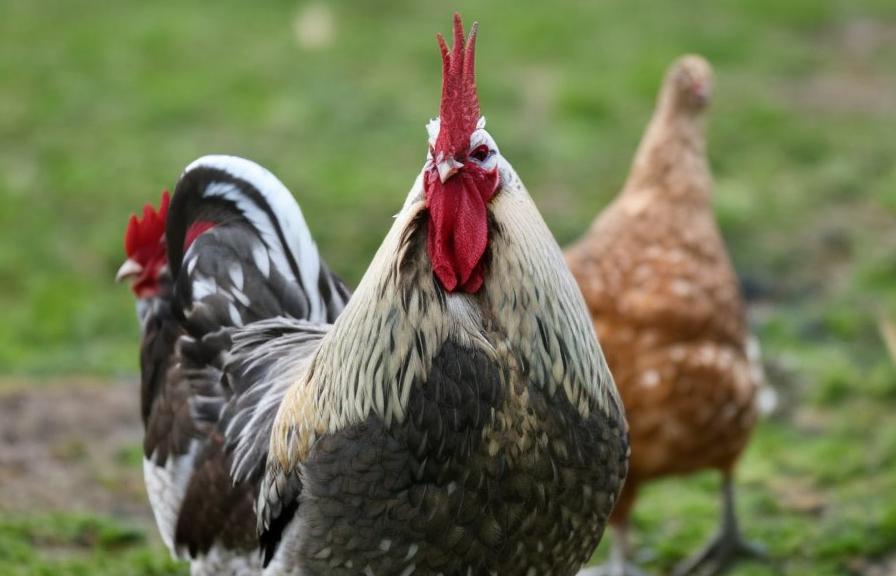
Domesticated guinea fowl are a hybrid breed that has been selectively bred for specific traits such as meat or egg production. They come in a variety of colors and patterns, including pearl gray, lavender, royal purple, white, pied, and coral blue. Domestic guinea fowl are known for their hardiness and adaptability, making them well-suited to small-scale poultry farming. They are also valued for their ability to control pests such as ticks and grasshoppers, making them a valuable addition to farms and homesteads.
In addition to their practical uses, domestic guinea fowl are also popular for their striking appearance and unique behavior. They are known for their social nature and often form tight-knit flocks with strong social hierarchies. They are also highly alert and make excellent watchdogs, alerting their owners to any potential threats or disturbances. Overall, domestic guinea fowl are a versatile and valuable breed that is well-suited to a variety of farming and homesteading situations.
Conclusion and Choosing the Right Breed
In conclusion, guinea fowl are a versatile and valuable addition to farms and homesteads. They are known for their meat and egg production, pest control abilities, hardiness, adaptability, and striking appearance. When choosing the right breed of guinea fowl, it is important to consider factors such as the intended purpose (meat or egg production), climate and environment, available space, and personal preferences.
For those interested in meat or egg production, breeds such as the helmeted guinea fowl or domestic guinea fowl may be the best choice due to their high productivity. If pest control is the primary concern, all breeds of guinea fowl can be effective in controlling pests such as ticks and grasshoppers. Additionally, factors such as climate and available space should be considered when choosing the right breed of guinea fowl.
Overall, each breed of guinea fowl has its own unique characteristics and qualities that make it well-suited to different farming and homesteading situations. By understanding the differences between breeds, potential owners can make an informed decision when choosing the right breed of guinea fowl for their needs. Whether it’s the striking appearance of the crested guinea fowl or the regal presence of the vulturine guinea fowl, there is a breed of guinea fowl that is perfect for every farm or homestead.
If you’re interested in learning more about different breeds of guinea fowl, you might also want to check out this informative article on the incubation period for goose eggs. Understanding the incubation process is crucial for successfully hatching and raising guinea fowl, and this article provides valuable insights into the topic. You can read it here.
FAQs
What are the different breeds of guinea fowl?
There are several different breeds of guinea fowl, including the Helmeted Guinea Fowl, the Crested Guinea Fowl, the Vulturine Guinea Fowl, and the Plumed Guinea Fowl.
What are the characteristics of the Helmeted Guinea Fowl?
The Helmeted Guinea Fowl is the most common breed and is known for its distinctive helmet-like casque on top of its head. They have a black and white speckled plumage and are often raised for their meat and eggs.
What are the characteristics of the Crested Guinea Fowl?
The Crested Guinea Fowl is known for its unique crest of feathers on its head. They have a more delicate appearance compared to the Helmeted Guinea Fowl and are often kept for ornamental purposes.
What are the characteristics of the Vulturine Guinea Fowl?
The Vulturine Guinea Fowl is the largest and most striking breed, with a blue face, white stripes, and a long, elegant tail. They are often kept for their ornamental value and are not commonly raised for meat or eggs.
What are the characteristics of the Plumed Guinea Fowl?
The Plumed Guinea Fowl is known for its long, elegant feathers and is often kept for ornamental purposes. They have a more delicate appearance compared to the Helmeted Guinea Fowl and are not commonly raised for meat or eggs.
Meet Walter, the feathered-friend fanatic of Florida! Nestled in the sunshine state, Walter struts through life with his feathered companions, clucking his way to happiness. With a coop that’s fancier than a five-star hotel, he’s the Don Juan of the chicken world. When he’s not teaching his hens to do the cha-cha, you’ll find him in a heated debate with his prized rooster, Sir Clucks-a-Lot. Walter’s poultry passion is no yolk; he’s the sunny-side-up guy you never knew you needed in your flock of friends!


